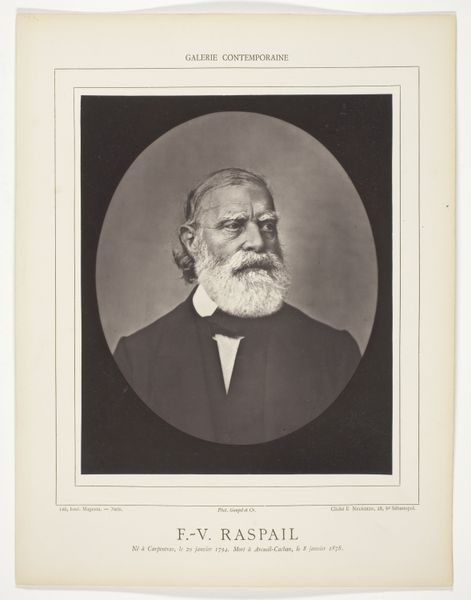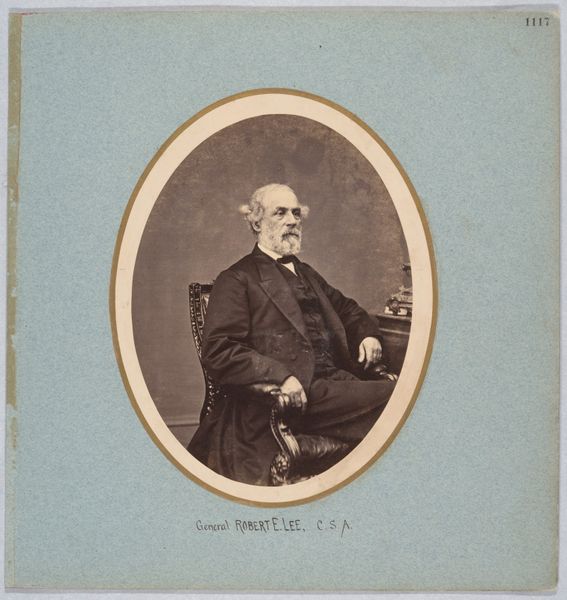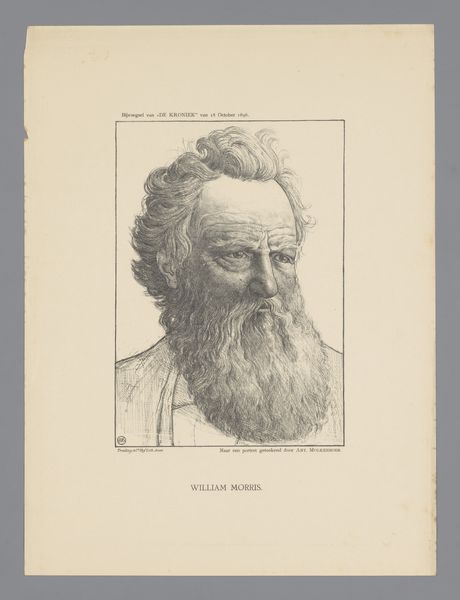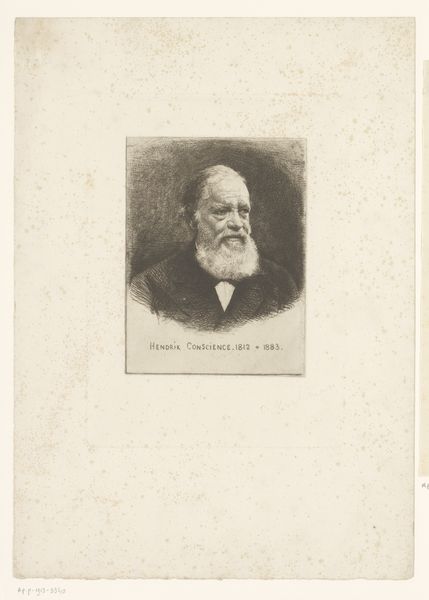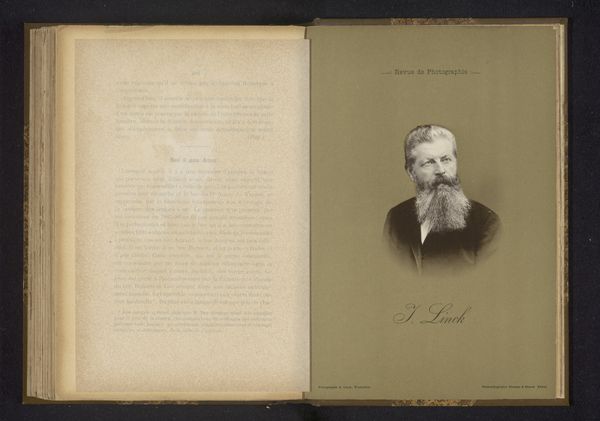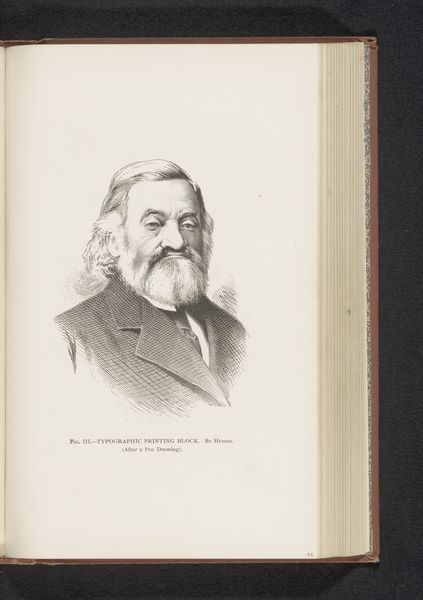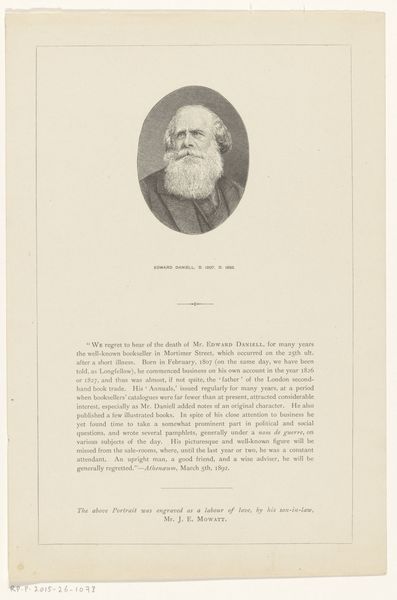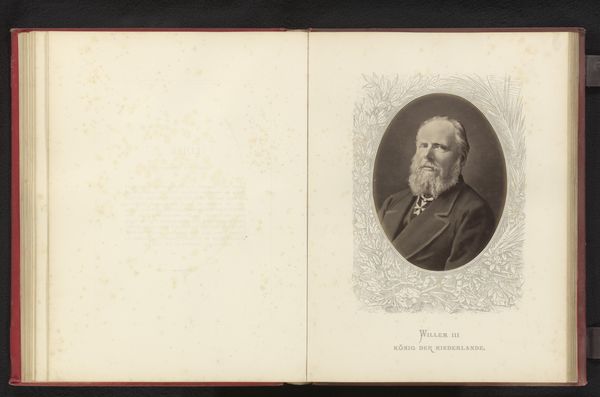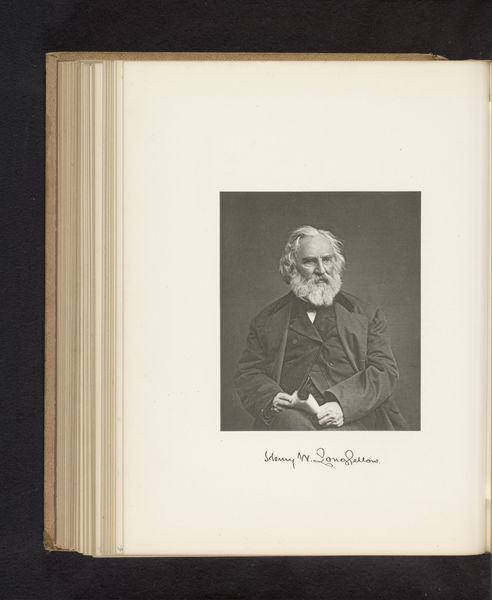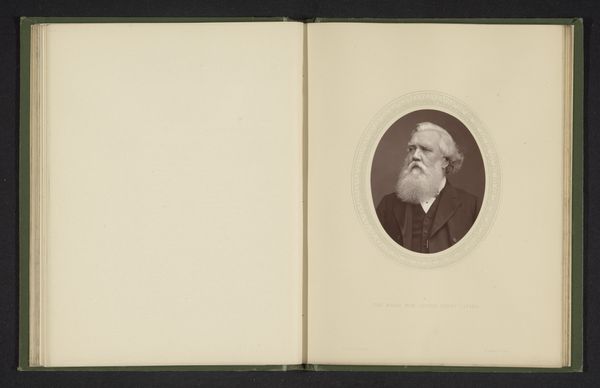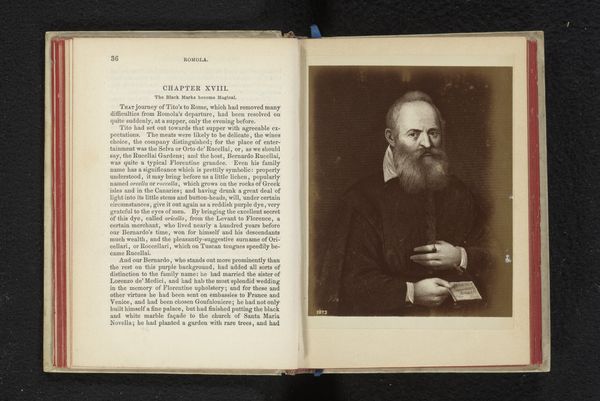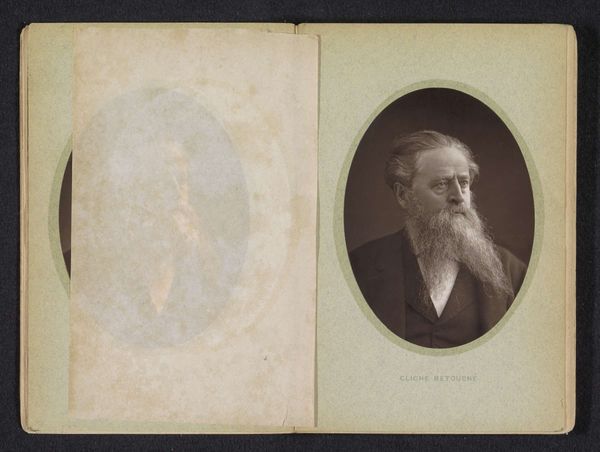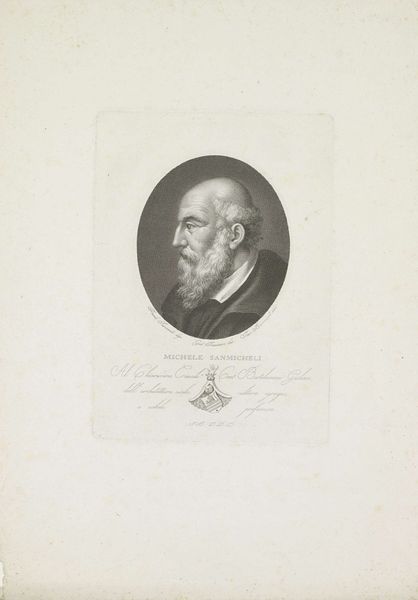
photography, gelatin-silver-print
#
portrait
#
16_19th-century
#
photography
#
coloured pencil
#
gelatin-silver-print
#
academic-art
Dimensions: height 227 mm, width 184 mm
Copyright: Rijks Museum: Open Domain
Editor: Here we have Étienne Neurdein's "Portrait of François-Vincent Raspail," made before 1878. It appears to be a gelatin silver print. It strikes me as quite formal, even imposing, especially the framing of the subject within the oval. What do you see when you look at this photograph? Curator: Immediately, I'm drawn to the material process behind this image. Consider the labour involved in preparing the gelatin silver emulsion, coating the glass plate, the precise timing of the exposure, and the darkroom alchemy. It speaks to a pre-industrial, craft-based mode of production now largely vanished. And how was this portrait consumed? Was it destined for mass reproduction, to disseminate Raspail's image and ideas, or was it more intimately circulated amongst his immediate circle? Editor: That’s interesting. I hadn’t considered the physical making of the image. So, how would Raspail have engaged with the creation of his portrait? Curator: Perhaps he understood the political potential of photographic representation. A carefully crafted image, reproduced and distributed, could cultivate a specific public persona. We should consider the socioeconomic forces at play; Raspail, a chemist and politician, actively participating in the dissemination of this photograph to build political support. Editor: It sounds like this photograph tells us about more than just one man's image. Curator: Exactly. It reveals the material conditions, the labour, and the strategies of self-representation at a particular historical moment, offering a fascinating glimpse into the relationship between image, production, and political power. We’ve got to think about photography not just as an artistic act, but also the material of it, its impact.
Comments
No comments
Be the first to comment and join the conversation on the ultimate creative platform.
